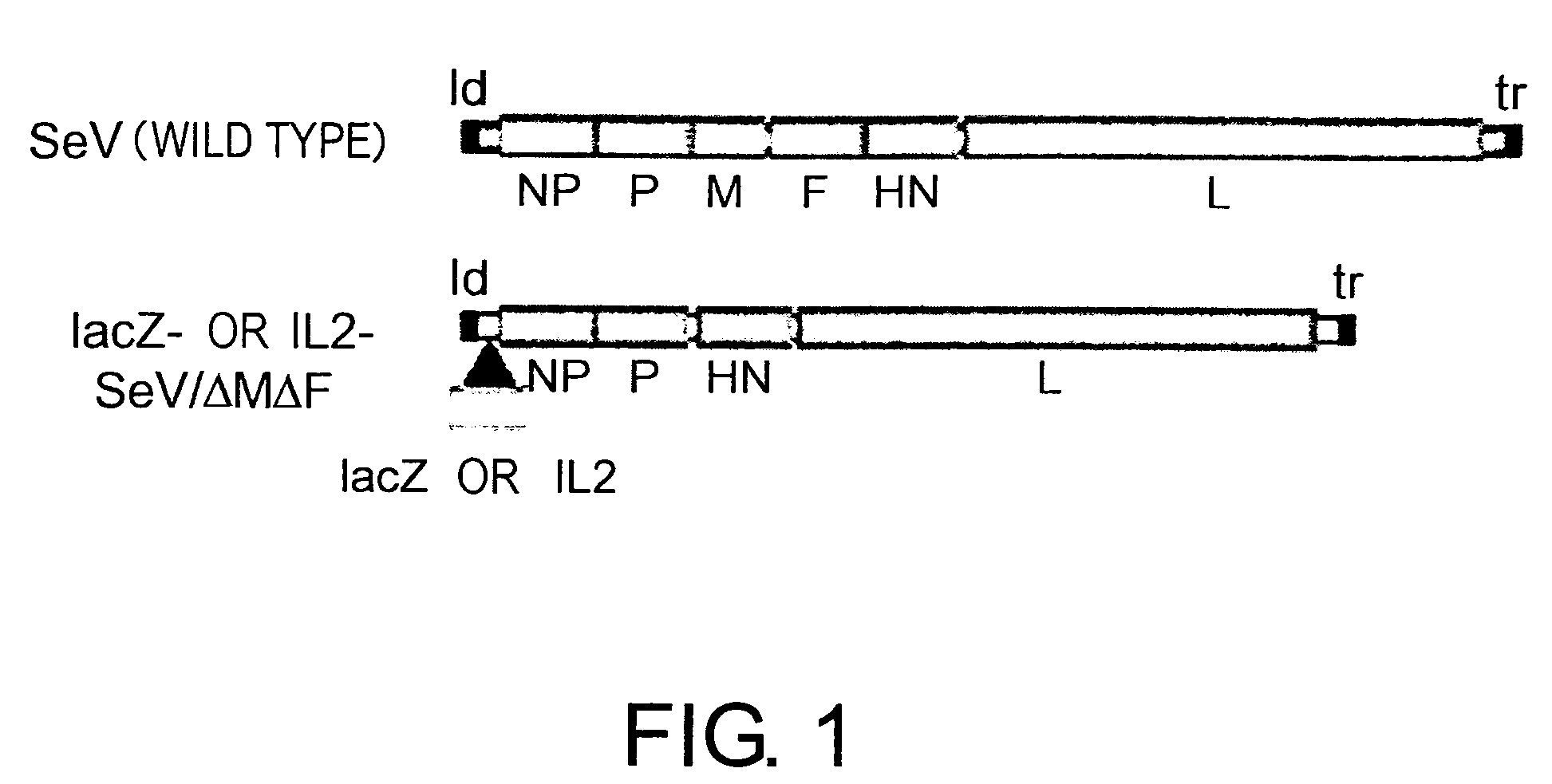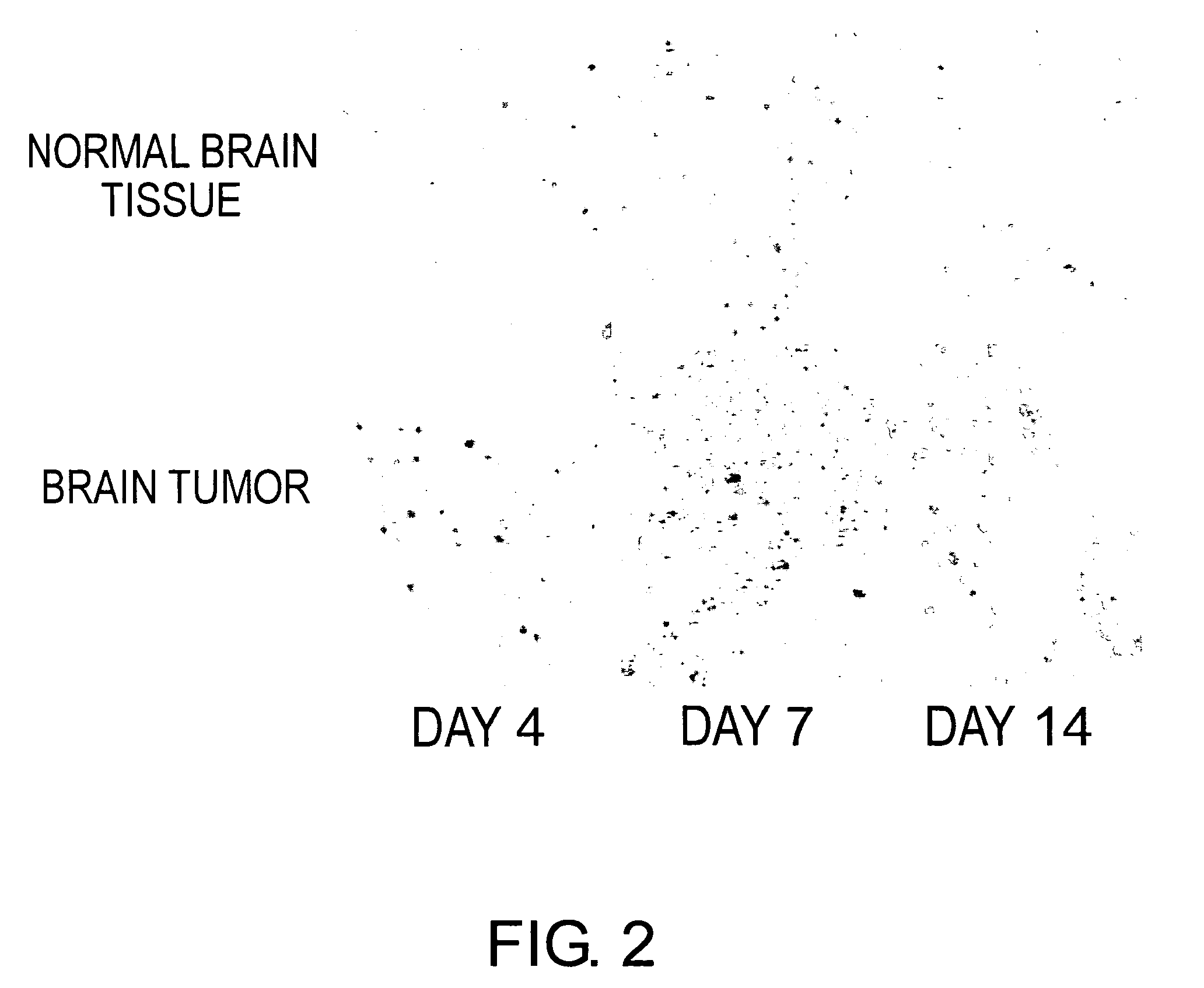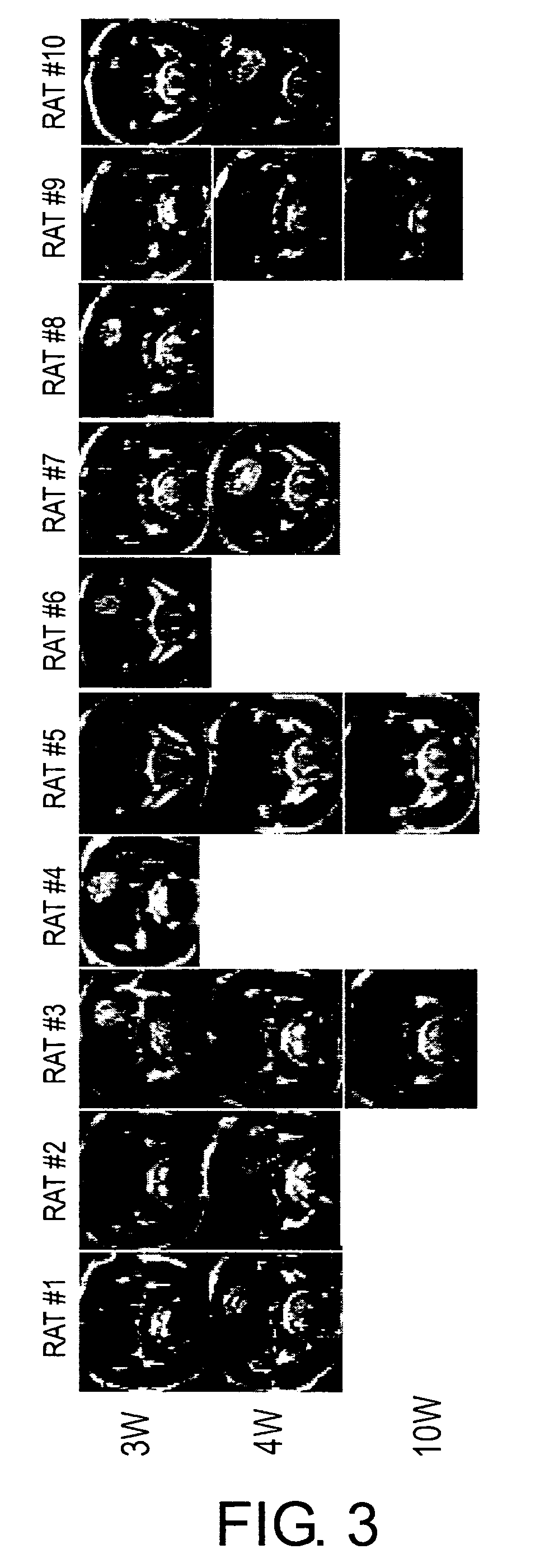Gene therapy for tumors using minus-strand RNA viral vectors encoding immunostimulatory cytokines
a technology of immunostimulatory cytokines and tumor genes, applied in the direction of immunological disorders, drug compositions, peptides, etc., can solve the problems of significant suppression of tumor growth, achieve marked anti-glioma effects, enhance effector cell migration, and eliminate established brain tumors
- Summary
- Abstract
- Description
- Claims
- Application Information
AI Technical Summary
Benefits of technology
Problems solved by technology
Method used
Image
Examples
example 1
Construction of a Recombinant Minus-Strand RNA Viral Vector Carrying Human IL-2 Gene
[0113]In the full-length Sendai virus (SeV) genome, viral genes are arranged in the following order: the 3′ leader (ld), viral genes of nucleocapsid (NP), phospho (P), matrix (M), fusion (F), hemagglutinin neuraminidase (HN), and large (L), and the last 5′ short trailer (tr) (FIG. 1). An SeV vector lacking both the M and F genes (SeV / ΔMΔF) was used in the experiments. Since the F protein is essential for viral infection and the M protein functions in the assembly and budding of viruses, SeV / ΔMΔF is nontransmissible and does not form virions from infected cells. SeV / ΔMΔF vector carrying a human IL-2 gene (hIL-2-SeV / ΔMΔF) and SeV / ΔMΔF vector carrying a lacZ gene (lacZ-SeV / ΔMΔF) were constructed as previously described (Inoue, M. et al., J. Virol., 77: 6419-6429, 2003; Inoue, M. et al., Mol. Ther., 5: S174, 2002). Specifically, the human IL-2 cDNA (Accession number: A14844) was amplified using a pair of...
example 2
Intracerebral Introduction of P-galactosidase Gene with the SeV Vector
[0114]Efficiency of intracerebral introduction of β-galactosidase gene using the SeV vector was examined in normal brain tissues and brain tumors, which were removed 4, 7, and 14 days after the injection of lacZ-SeV / ΔMΔF (also abbreviated as SeV / LacZ). When the vector was injected into brain tumor tissues, the appearance of the vector-injected tissues typically showed dispersed colonies of X-gal-positive cells, consisting of the lacZ-SeV / ΔMΔF-injected tumor cells and progenitor cells thereof (FIG. 2). Tumor cells that were not introduced with the vector were detected between dispersed X-gal-stained colonies. The expression or accumulation of β-galactosidase reached the maximal level 7 days after the vector injection, and the expression level was maintained on day 14 (FIG. 2). The vector introduction was hardly observed in normal brain tissues surrounding the tumor, except in choroid plexus. When injected into norm...
example 3
Anti-tumor Effect of the i.c. Injection of the hIL2-SeV / ΔMΔF Vector
[0115]Naïive rats intracerebrally inoculated with 9L gliosarcoma developed progressive tumors, and all of them died by the 25th day after inoculation (day 25). The therapeutic effect of the i.c. injection of hIL2-SeV / ΔMΔF (abbreviated as SeV / IL-2) in combination with a subcutaneous (s.c.) immunization using an irradiated whole-tumor-cell vaccine was examined by determining the tumor volume using serial Gd-enhanced MRI (FIG. 3). After three weeks (day21) of 9L tumor cell inoculation, the tumor volume (86.5±63.8 mm3, n=10, on day 21) of the rats subjected to intracerebral administration of hIL2-SeV / ΔMΔF and s.c. immunization was found to be significantly reduced as compared with the untreated rats (286±51.2 mm3, n=10, on day 21), rats subjected to s.c. immunization alone (197±48.9 mm3, n=10, on day 21), i.c. administration of lacZ-SeV / ΔMΔF in combination with s.c. immunization (233±73.2 mm3, n=6, on day 21), or i.c. ad...
PUM
| Property | Measurement | Unit |
|---|---|---|
| volume | aaaaa | aaaaa |
| volume | aaaaa | aaaaa |
| volume | aaaaa | aaaaa |
Abstract
Description
Claims
Application Information
 Login to View More
Login to View More - R&D
- Intellectual Property
- Life Sciences
- Materials
- Tech Scout
- Unparalleled Data Quality
- Higher Quality Content
- 60% Fewer Hallucinations
Browse by: Latest US Patents, China's latest patents, Technical Efficacy Thesaurus, Application Domain, Technology Topic, Popular Technical Reports.
© 2025 PatSnap. All rights reserved.Legal|Privacy policy|Modern Slavery Act Transparency Statement|Sitemap|About US| Contact US: help@patsnap.com



